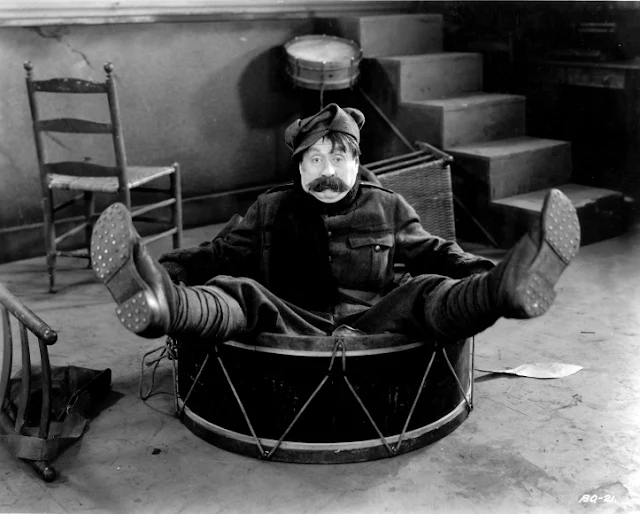 |
| Theresa Harris and Barbara Stanwyck in Baby Face |
Baby Face has a reputation as the raunchy film that helped bring about the stifling Production Code in 1934, the year after it was released. But even in its original version -- for years only the expurgated film could be seen -- it doesn't exhibit much that would bring a blush to today's maiden cheeks. To be sure, its heroine, Lily Powers (Barbara Stanwyck), sleeps around in her determination to get somewhere, which in her case is marriage to a bank president. But this moral deviance, the film suggests, is the result of having been pimped out by her bootlegger father from the age of 14. So when he's blown up by the explosion of one of his stills, what else can she do but head for the big city and try to better herself? She has, after all, only the guidance of a middle-aged German, a customer of her father's speakeasy, who quotes Nietzsche at her. Her will to power involves the only capital she has: her body. So she sleeps her way up the flowchart of a New York bank until she's the kept woman of a vice-president, and when that ends in his being murdered by an ex-lover who also commits suicide in what the newspapers call a "love nest," she gets paid off -- to prevent her selling her diary to the newspapers -- with a job at the bank's Paris branch. And then she goes straight, fending off the attentions of various men, and making a success of the bank's travel bureau division. It can't end there, however, because when the bank's young president, Courtland Trenholme (George Brent), comes to Paris on a visit, they fall in love and get married, causing a scandal that leads to the bank's closing and Trenholme's indictment for some kind of corporate malfeasance. When he asks Lily to help him out financially -- she has accumulated half a million dollars in gifts from him, and presumably from her former lover -- she refuses, reverting to the ruthless, hard-edged Lily. But just as she's about to leave him she has a change of heart, only to find that the desperate Trenholme has tried to commit suicide. He's not mortally wounded, however, and in the ambulance on the way to the hospital she confesses that she really loves him and he gazes gratefully at her. Fade out. Censors in states like New York bridled at the apparent rewarding of sin and forced Warner Bros. to cut some of the more scandalous scenes and to change the ending so that Lily does penance by returning to her old home town to live a chastened life. But even in its long-lost uncensored version, there's something a little off about Baby Face, a feeling that it wants to be more than just a story about sex and upward mobility. The men in the film, including the young John Wayne, are an unmemorable series of himbos and sugar daddies, easy pushovers for the likes of an ambitious and unscrupulous young woman. The last-minute change of heart and the squishy happy ending feel unearned. What coherence the film has comes not from the script but from Barbara Stanwyck's performance, from her tough likability.



